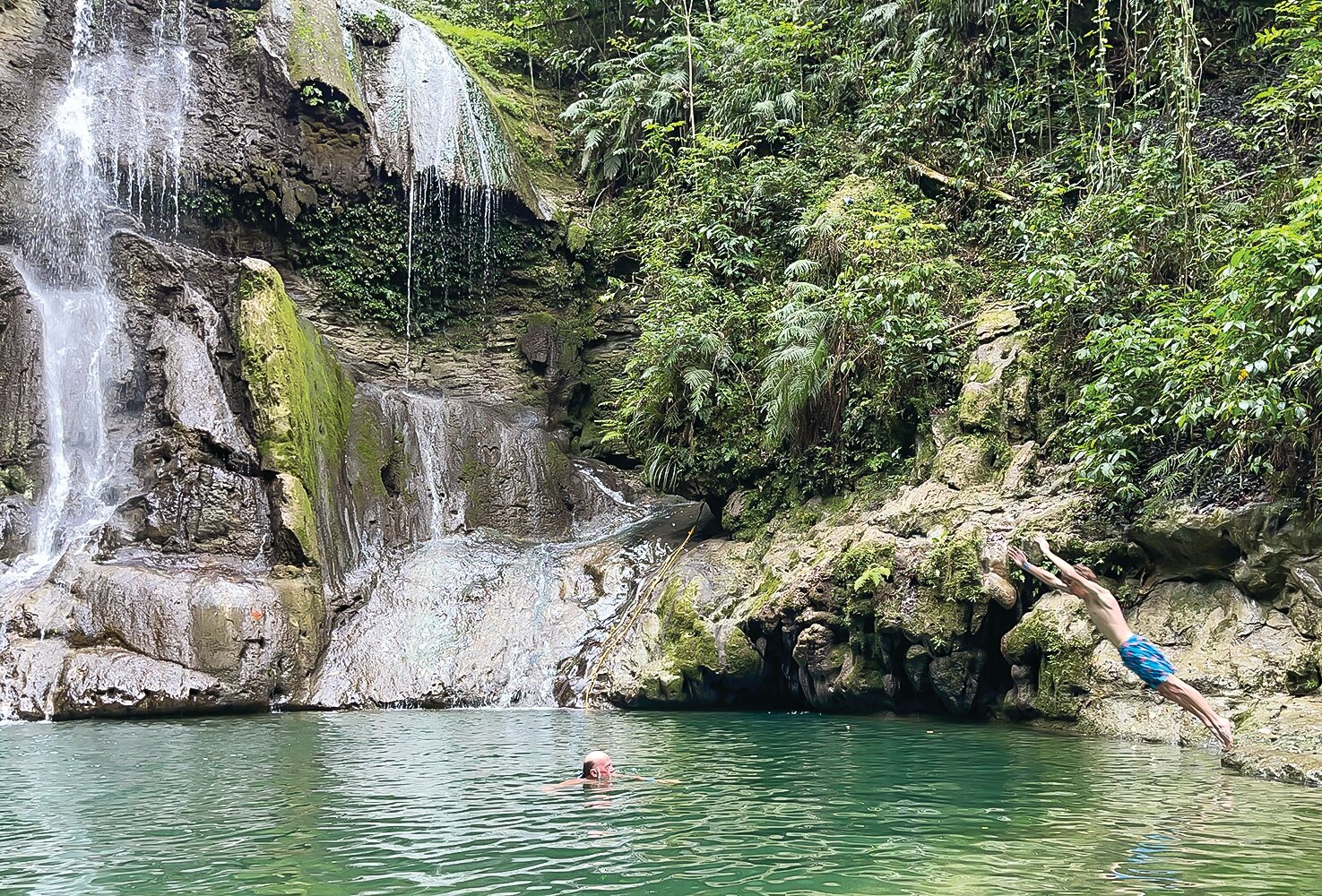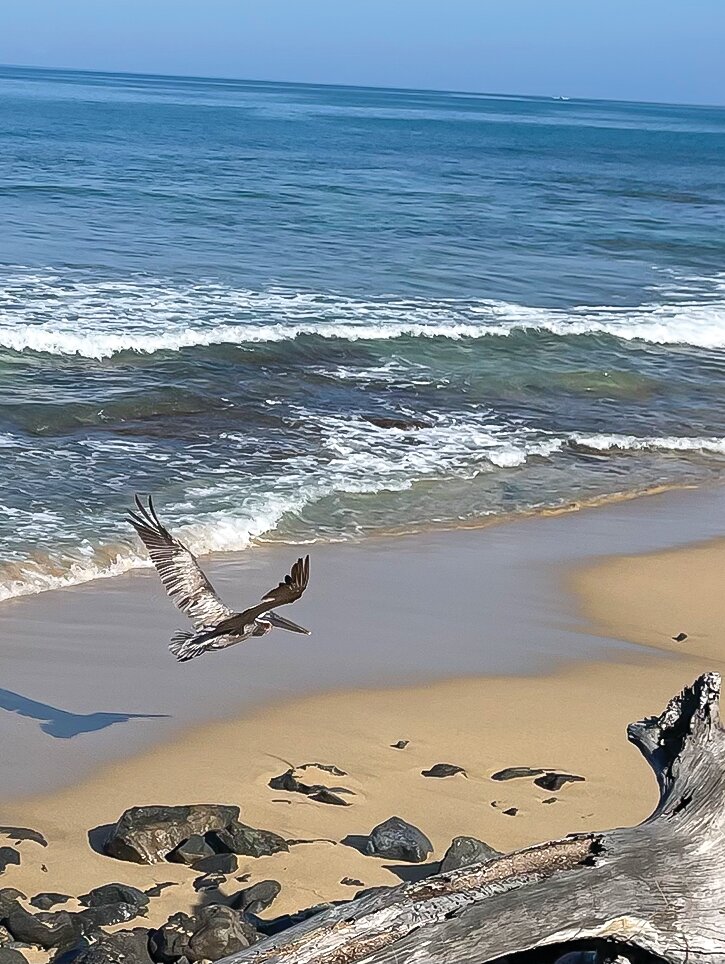Support the Timberjay by making a donation.
Seeking heart, light, water, and coffee
Heartlessness has always been easy to find. But if you know where to look, you’ll find kind eyes and warm hearts too. Shiny palm tree fronds glitter in the sun. I can’t stop looking at …
This item is available in full to subscribers.
Attention subscribers
To continue reading, you will need to either log in to your subscriber account, below, or purchase a new subscription.
Please log in to continue |
Seeking heart, light, water, and coffee
Heartlessness has always been easy to find. But if you know where to look, you’ll find kind eyes and warm hearts too.
Shiny palm tree fronds glitter in the sun. I can’t stop looking at the light. High overhead parakeets chitter and flutter like whirling leaves. A three-foot lizard darts by and runs up a tree trunk, stopping dead as I come close. I reflect that one night at 30 degrees would kill thousands of these bug-eaters. But this is not Minnesota’s north woods. This is northwestern Puerto Rico, where people put on thick fleeces if the temperature dips to 68. There are no 30-degree nights here.
The February light in Puerto Rico shocks me. Even in Minnesota’s June, there is no sunshine so warm, so bright, so yellow. We squint, pull our hats lower, and rub on sun block. We walk for miles along exquisite beaches. We gorge on orangey-red papaya and sweet, small bananas that grow alongside the road. The roads and town squares are clean. I mention this to a local woman. She smiles and says that every night crews come out to clean the streets.
On the beaches light and water make magic. On some we hike the dunes for miles next to flat water. I can’t get over the colors of the water—clear turquoise and aquamarine. On other beaches, waves crash on huge sharp rocks. We pick our way along a narrow path. Puerto Rico has hundreds of beaches, some famous, long and flat with planned walks. There are also tiny, unknown beaches, hidden at the end of little streets so that only the locals know how to get there. On my favorite day, I sit by the sea in a high wind, tugging my hat low. The waves pound out a rhythm that seems to come from another life.
At first, I think I don’t know this water at all. The huge waves feel easy and enchanted. The sound of the surf soothes like a lullaby. But I’ve missed a huge point. Just as in the north we know how dangerous it is to fall through the ice, the people here know that big waves hide rip currents, and that the danger of drowning is real. Just as in the north sometimes it’s safe to drive a truck across ice on a lake, here in Puerto Rico the water is often soft and safe. Toddlers laugh and splash while their grandparents stand nearby knee deep in water. But when there is danger, it is real and quick and totally merciless—and the locals know this. In some spots the experts—the surfers— ride the waves, just as in the north, experienced skiers bushwhack into the BWCA through fresh deep snow. They know what they’re doing. But for novices and tourists, there are warnings. When we first arrive, there is rough water because of winter storms from the north. In every grocery store and coffee shop, the locals make a point of telling us that we absolutely must not swim today.
My ignorance, my wrong assumptions, shatter in a lovely heap. The people around us are healthy and elegant in black long-sleeved clothes that would look right in New York City. Many people have lived in New York and are completely fluent in English. Many have fantastic tattoos. This is not Mexico—The food is not chili-pepper hot. Instead, the comfort food, arroz con pollo (rice and chicken), is as delicious and mild as homemade macaroni and cheese. Seafood mofango, a local specialty of seafood with rich sauce on a bed of mashed plantains, is as rich and filling as stew with dumplings.
On the beaches, in restaurants and at fairs, we see three-generation family groups. There are a few tourists. Families come with sun umbrellas, chairs, beach towels and bags of snacks. A grandfather laughs as his tiny granddaughter puts her face in the water for the first time. A very pregnant bikini-clad young woman talks her sister into taking photos against the backdrop of the roaring waves.
What happened to Puerto Rico’s indigenous people is as cruel as what happened in the U.S. and Canada. Columbus, looking for gold for the Spanish, stepped onto the beach here one year after 1492. The Spanish immediately began making the Taino, the local tribal people, into slaves. In 1508 there were about 30,000 tribal people. In 1511 there was a Taino uprising. By 1520, only 1100 survived. Because gold mining was such brutal work, by 1513, the Spanish started supplementing the work crews with enslaved African people. By 1540 most of the gold had been carted away to Europe. Instead, the Europeans used the slave labor on coffee, sugar, and tobacco plantations.
A few of the Dominican friars who came with the Spanish soldiers followed their hearts and worked to free the slaves. In 1511, Fra Antonio de Montesino said this: “Are these not men? Have they not got rational souls? Are you not bound to love them as you love yourself?” Although he was driven out of his position, he succeeded in convincing the Spanish court, and in 1512 the first law was passed that forbade the slavery of the local indigenous people. Yet, conditions set for freedom were that the local people needed to be “clothed, Christian, and capable.” African enslaved people were not freed until 1873. Today’s genetic studies show that the Puerto Rican population is approximately 15 percent mestizo (mixed indigenous), 21 percent African and 64 percent European. We visited the Convent of Porta Coeli (Gateway to Heaven) in San German, built by Dominican friars in 1604. In the museum’s art we saw the gaunt, beautiful faces of the people.
Along Puerto Rico’s highways American corporations dominate— Wendy’s, MacDonald’s, and Walgreens. There are huge facilities for Hewlett Packard and Lockheed Martin, and we saw the remnants of massive U.S. military facilities. There are, of course, hundreds of Catholic churches and dozens of Presbyterian, Baptist, and Pentecostal churches. We visit during Lent. On weeknights in the evenings, church lights are on and pews are full.
We see much wreckage from Hurricane Maria in 2017, in which winds of 175 mph killed almost 3,000 people. We swim and snorkel among the shattered ruins of reinforced concrete buildings, visible 30 feet below. We drive on roads with serious potholes. Many Puerto Ricans complain that the U.S. is a negligent guardian.
Someone asks me if I think the Puerto Ricans are “ready for statehood.” I think of the indigenous people in the U.S. and the First Nations of Canada. Their experience is not at all that of a privileged majority lining up to vote. And yet they live everywhere in the U.S., speaking up and teaching truths.
I am happy for the kind eyes, strong bodies and close groups I see. We meet many who had worked in the U.S. and were now home. Every now and then we hear Caribbean drummers who play at farm markets, at art festivals and on the beaches.
I sip my coffee. There’s no acidity, no bitterness. We meet coffee farmers up in the highlands at the coffee festival in Maricao. The old plantations are gone. One farm owner says, “If you want more bitter coffee, just ask my husband’s cousin.” She smiles and points to the stall across the way.
This coffee is not bitter. I’ve bought a dozen bags because it’s easy to love. If you know where to look, you can find kind eyes and warm hearts.









